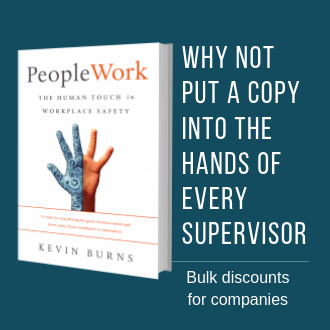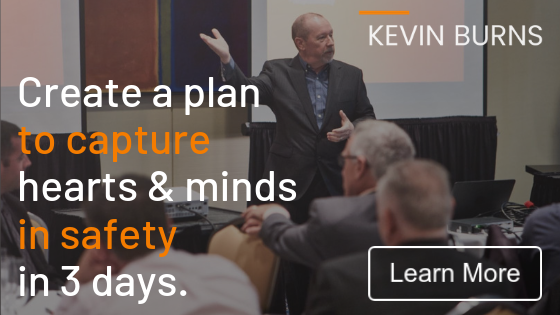Buy-in Doesn't Happen on Safety Rules
When rules become more important.
I read an article recently that offered this bit of wisdom: have you ever noticed that the less money you earn in your job, the more rules there are to follow? It seems that the higher up you go in an organization and the more money you earn, the fewer rules that seem to apply. A CEO appears to have to fewer rules to follow than a front-line employee.
But rules are rules. And, love them or hate them, we need rules, especially in safety. Safety rules apply to all levels of management and employees. But the problem we run into is when the rules seem to become more important than the people those rules are meant to protect.
It’s easy to enforce a rule. In fact, is easier to enforce a rule than it is to have a delicate conversation with an employee. That’s because rules don’t waver. You can’t question or challenge the rules in the same way you can question a supervisor’s opinion of your work.
And it’s in the clinging to those rules that the world of safety has gotten a bad reputation as a punitive program of consequences and paperwork. Paperwork, rules and consequences are not warm and fuzzy which makes it nearly impossible to warm up to it.
How is it possible to buy-in to rules and procedures?
Well, you don’t. You buy-in to standards.
We all have a standard for how we do our work. Some people’s standards are to do just enough to not get fired. Other people’s standards are to do more than expected and leave others impressed. Some people exceed the minimums. Some need a push just to get a bare minimum effort.
 Each person in your workplace has a standard for not only how they do their work, but the way they live their lives. No two personal standards are exactly the same. So, when you try to enforce rules, some push back, because they have a standard for what they will accept and what they will tolerate. That personal standard may end up in conflict with a corporate rule. And it is impossible to voluntarily buy-in to something that conflicts with your standards.
Each person in your workplace has a standard for not only how they do their work, but the way they live their lives. No two personal standards are exactly the same. So, when you try to enforce rules, some push back, because they have a standard for what they will accept and what they will tolerate. That personal standard may end up in conflict with a corporate rule. And it is impossible to voluntarily buy-in to something that conflicts with your standards.
Focus on standards.
So, here’s a great way to build better buy-in to the safety program. Embrace the idea of standards. Replace the focus on rules with a focus on creating a standard for your crew or team.
What is the standard you expect of your team? Be very clear about how you expect your team to act, to think, to communicate and to work. Set a standard for your people and include them in determining how high the standard should be. Given the opportunity for input, you may be surprised at how high they set their own standard for performance.
Focus on standards.
But there is one thing you need to watch for. Some of your lower (bare minimum) performers may not want to live up to a higher standard of performance. They will resist, complain and may even attempt to undermine the standard. Resist the temptation to lower the standard so that everyone is able to meet the standard. High performers hate low standards. They’re too easy to achieve. Lower standards offer no challenge in the work which leads to boredom. When a high performer is no longer challenged, they will move on to someplace that will challenge them. Do not lower your standard. Once a standard is set, there is no moving backwards.

Set standards for your team’s interactions, standards for how often you’re going to talk to your people and the way you’ll do it. Standards for coaching and one on one discussions. And biggest of all, standards for yourself, the kind of leader you’ll be and the way you will look after your team.
Focus on your standards. Rules compliance will come naturally.
Kevin Burns helps organizations connect hearts and minds in safety and get employee buy-in to the safety program. He is the author of PeopleWork: The Human Touch in Workplace Safety.
Get more information www.kevburns.com


